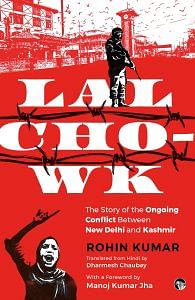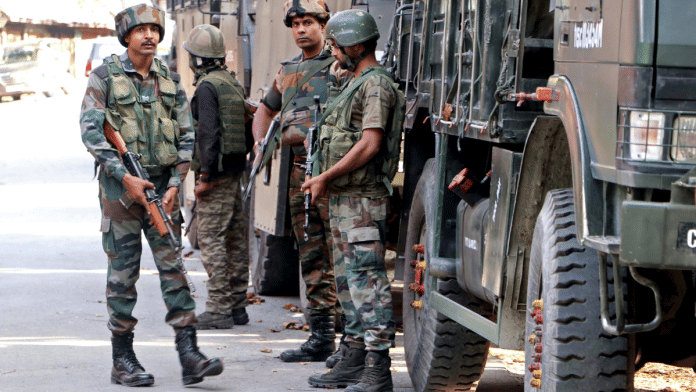I spoke to Insha Malik extensively on the topic.213 Insha is an assistant professor in Kardan University of Kabul, the capital of Afghanistan, and a visiting professor at Washington University. She is also the author of Muslim Women, Agency and Resistance Politics: The Case of Kashmir.
I was reading one of your articles. You speak of the politics of grief and mention the public and active participation of women in burials with Burhan’s death in 2016 as a reference point. Did this begin in 2016 or had there been such incidents in Kashmir in the past?
That’s a rather complex question. To answer this, I must first tell you a little about Kashmir’s history. Kashmiri society has been syncretic historically. Its social structures and rituals are different and unique compared to India, Pakistan, Central Asia and Afghanistan. Kashmiri Pandits living in the Valley are different from other Hindus living in India. Their rituals and customs are a living proof of Kashmir’s syncretism.
So it’s clear that Kashmir had evolved its ways of living based on its geographical conditions. That is why women have been more politically active in Kashmir compared to the rest of India. They have had power. They have been vocal in their communities as well.
I believe Kashmiri women cannot be understood from a single lens. Quite like how Islam can’t be understood with a single lens. To understand Islam you will need to understand its history, geography and economy; only then will you be able to understand why a community is the way it is.
For example, look at Afghanistan, some hundred kilometres away from Kashmir. Afghanistan’s literacy rate is 43 per cent while Kashmir’s literacy rate is way above this. Both are Muslim-majority regions. Therefore Kashmiri women cannot be seen as merely Muslim women. We need to factor in a myriad social and political indicators or else we will commit the mistake of seeing Kashmiri women as the rest of Muslim women in India.
Also read: Gadar, Roja, Dil Se, Lakshya—Indian millennials’ memory of Kashmir was shaped by movies
Now I must answer your question. Yes, Kashmiri women have always been politically active. Women had actively participated in resistance against the Dogras in 1846. Illiterate women have been a part of progressive politics as well. Women were involved in questions of self-determination and human rights even then. Today, these ideas are being documented but these ideas have existed through word of mouth and the culture of dialogue in Kashmir.
Historical, political, communal and cultural dialogues have shaped Kashmiri women. This has made it possible for women to forge their own paths at the community level and extend their role in their own communities. It is possible that you wouldn’t have seen many women questioning patriarchy and faith in the 1990s. In 2016, however, after the death of Burhan Wani, the world came to know of how active Kashmiri women are through social media. That is why I have used this incident as a reference point.
Although you should know that thousands, including women, had attended the burial of Ashfaq Majeed Wani, commander-in-chief of JKLF. There was no internet back then or social media, obviously, but only tape recorders, so the visuals of Majeed Wani’s burial did not reach the masses. This is why I felt that it was important to speak of women being active through the visuals of 2016.
You mentioned the involvement of women in Ashfaq Majeed Wani’s burial in 1990, but generally, women do not have the freedom to attend them. Please tell me a little about the politics of grief.
Traditionally, there has been a gendered division of grief. There has been a difference in the role of men and women. Women are seen as the carriers of culture. They are expected to cry, mourn or share what should be remembered of the dead. This is quite different in Kashmir. When someone dies, women in the neighbourhood sit and mourn together, they talk about the person and offer each other support.
Since 1990, conflict has taken so many lives in Kashmir that death is no longer an exclusive event in Kashmir. Thousands were being killed. People kept losing their parents, children, siblings—everyone. The mourning of death no longer thus remained individualistic, but rather became public.
While women continued to mourn inside their homes, they also understood that mourning traditionally is not going to bring any change to the massive political crisis the society was going through. Women found creative ways to grieve amidst the warlike conditions and the normalization of death.
For example, look at the demonstrations of APDP that have been going on for years. With the public display of grief they assert that the state cannot decree who should be mourned. The state does not have a right to order that the death of an Indian soldier should be mourned while that of a militant or civilian shouldn’t be.
Thousands of deaths in Kashmir have gone uninvestigated. People have been shot at point blank range. The idea of justice has been battered. Women have been challenging the narrative built by the state by publicly demonstrating their grief. They are determined to not let the deaths be normalized. They are determined to say that the harm done to them is not normal and so they won’t mourn ‘normally’ either.
Also read: How the Charkha became a symbol of India’s freedom struggle
I was going through the audio message of the Lashkar-e-Taiba in which they had appealed to women to not be a part of protests. Hizbul had previously warned photojournalists to not take pictures of mothers and sisters in mourning. On the other hand, we are speaking of women challenging the narrative of the Indian state. Do you not think that this is a rather precarious situation for women?
I agree. The crisis is deep. Though we must remember that whenever we are speaking of Kashmir we are speaking of the [world’s] most militarized society. For example, some five years ago, for some five hundred active militants, five hundred to six hundred thousand army personnel were stationed in the Valley. They must be seen in a specific social and political context. They are living in a situation where you either kill or get killed. They face the army every day and are shaped by this confrontation.
Actually, we think of Kashmiri women as supporters of the militant because of our own prejudices and impose the same identity on all of Kashmiri society. If you look at the nineties, you will find that women have played a crucial role in the armed rebellion. One such woman was Asiya Andrabi. Andrabi’s sharp critique of the Hurriyat and separatist leaders would put many men in politics to shame, but in a patriarchal Indian social structure such women are termed ‘mad’ or ‘extremist’.
However, in Kashmir, we are face to face with Hindu patriarchy. My apologies for saying this, but the Indian state has made the majority Muslim Kashmir a question of Hindu hegemony. The Indian state wants people to be conscious of their faith.
Why did Kashmiri Muslims suddenly get so vulnerable? How did the Kashmiri Muslims who were on the path of modernity before the nineties suddenly become so concerned about their identity? Think of how Muslims began to be projected post 9/11 and how that fed into the projection of Muslims by Hindu politics. This resulted in Kashmiris becoming conscious of their identity. One must situate Kashmiri women in this dynamic identity-forcing and identity-forming politics.
Today, women are scholars, they’re leading in sports, they’re scientists, but why aren’t they visible? Where is their representation? There’s an effort to make them invisible. Both the Indian state and the militants want the same.
 This excerpt from ‘Lal Chowk: The Story of the Ongoing Conflict Between New Delhi and Kashmir’ by Rohin Kumar has been published with permission from Speaking Tiger Books. The book has been translated from Hindi by Dharmesh Chaubey.
This excerpt from ‘Lal Chowk: The Story of the Ongoing Conflict Between New Delhi and Kashmir’ by Rohin Kumar has been published with permission from Speaking Tiger Books. The book has been translated from Hindi by Dharmesh Chaubey.






